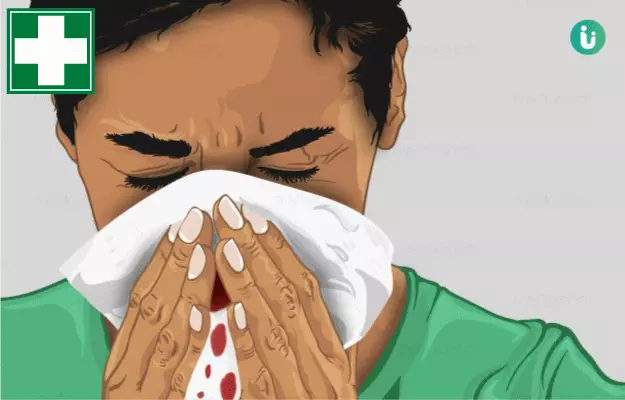A nosebleed, or epistaxis, refers to bleeding from the nostrils of the nose. Sometimes, nosebleeds can present as blood in the mouth or oral cavity, which can be confused as bleeding from different sites like the digestive tract (hematemesis) or the respiratory tract (hemoptysis). Nosebleeds are of two types – anterior nosebleeds and posterior nosebleeds. Anterior nosebleeds are more common and occur in young people due to nasal dryness, whereas posterior nosebleeds are less common and occur due to more serious underlying causes like high blood pressure and heart disease, and affect the elderly. Anterior nosebleeds generally present with bright red bleeding that appears suddenly, whereas the bleeding in posterior nosebleeds is far more profuse and needs hospital admission.
Common signs and symptoms of a typical nosebleed are:






























